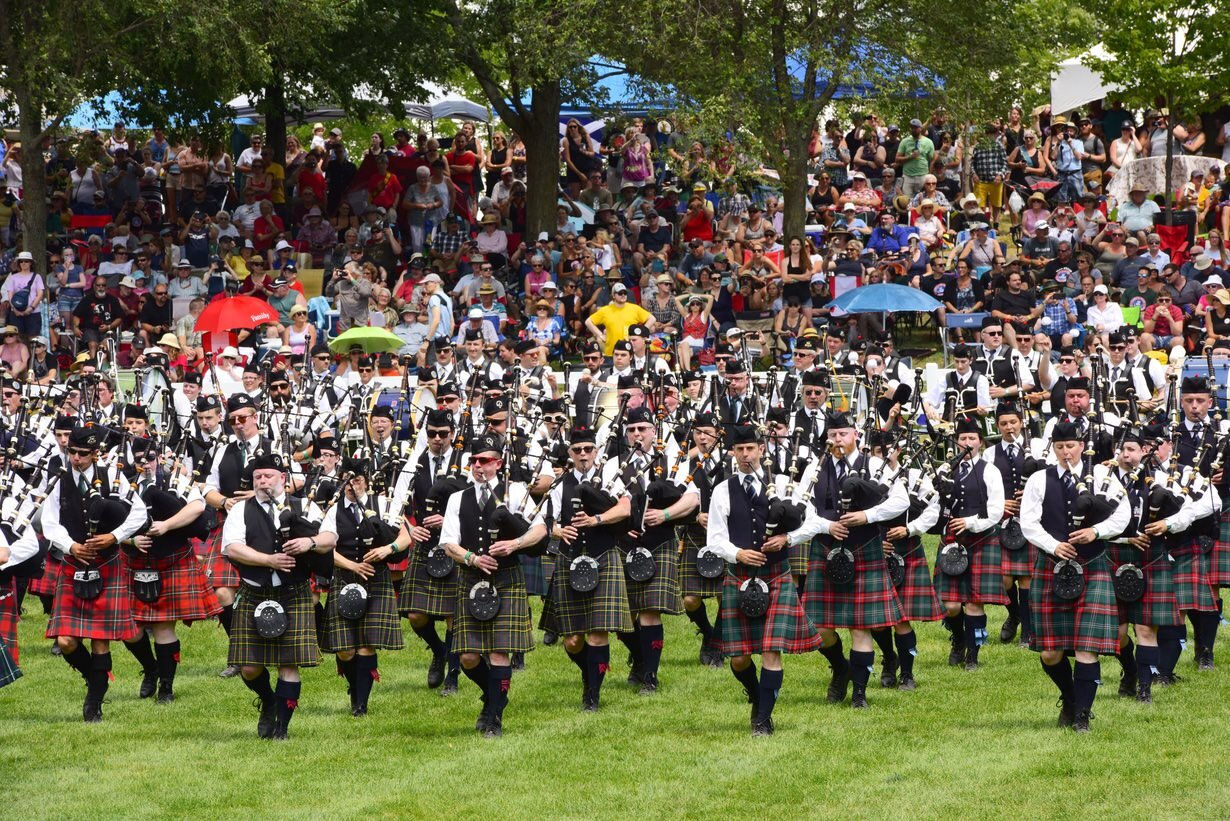TRADITION: trivia - Bagpipes, an instrument played throughout the world, became a Scottish symbol of pride in the 18th century.

The bagpipes are known as a universal folk instrument believed to have originated in the Middle East or Central Asia. Where and when they originated from exactly no one knows, but there are sculptures of bagpipes dating back to 1500 B.C.
By the time the Roman Empire came along, pipes were played by infantry and by shepherds. Goats and sheep often supplied the hides from which bagpipes were made and records show that Roman soldiers brought them to Ireland before they did Scotland.
By the 1300’s Pipers were significant members of Clan social hierarchy in the Highlands of Scotland, with the top being the personal piper of the chief. From communication roles in towns to roles on the battlefield, their role was to awaken the pride and strength of the clan. On the battlefield while leading the charge, they would help the soldiers feel invincible and often played until the battle ended or they were killed.
By the 18th century the bagpipes were played throughout the world in various forms and primarily played in the Highlands more than the Lowlands of Scotland. Through multiple failed Jacobite Rebellions (Scottish Highlanders VS the British Crown) culminating at the final battle in the fields of Culloden in 1745, the outcome of the failed rebellions is where the Great Highland Bagpipe became a 'symbol of national Scottish pride'.

James Reid, was one 558 men who were captured and taken to England for trial by the English crown after the Battle of Culloden. Accused of High treason, Reid claimed innocence as he did not even have a sword or a gun and was captured with only his bagpipes in hand. The high court claimed that a highland regiment never marched to war without a piper at its head. Therefore, in the eyes of the law, the bagpipe was considered an ‘instrument of war’. This would be the first time in human history where a musical instrument would be declared by law as an ‘instrument of war’.
From the 558 Jacobites captured at Culloden, 70 were sentenced to be hanged, James Reid being one of them. Being hanged in batches, the men were given one last chance to live by claiming allegiance to the crown and enlisting in the British Army. By the time it came to Reid’s batch and with many choosing life over death, the piper from Culloden was left alone on the gallows to be hanged then drawn and quartered. As a good piper does, they never turn their back on their clan, until the battle or their life has ended.
With the British government’s passage of the Tenures Abolition Act, the Disarming Act, and the Heritable Jurisdictions Act, before and throughout this time period, which was to disarm the Highlanders from their way of life and basic ability to raise another army. The wearing of tartans and the owning of weapons became outlawed, therefore the playing of bagpipes became illegal, as it was an 'instrument of war'.
Unfortunately for the British, this outlawing actually prompted Scots Highlanders, as well as many Lowlanders, to begin embracing the Highland arts and culture as national symbols of Scottish independence. Both Lowland and Highland Scots started wearing tartans, speaking more Gaelic, and embracing the bagpipes as national symbols of Scottish identity and as means of protesting the British attempts of extinguishing a way of life and a people.
Approximately 100 years later the same British Crown, who tried to extinguish the sounds of the highland pipes, would be the catalyst to embedding them into British culture forever. (click to find out more)
for more information about the documentary TRADITION: A STORY FROM GLENGARRY or how to help/donate click the link below.
sign up to our newsletter on our website or follow us on facebook or instagram.

Comments